The first Soviet mass ZRK C-75
The design of a mobile anti-aircraft missile system was made on the basis of the Resolution of the Council of Ministers of the USSR No. 2838 / 1201 from November 20 1953. "On the creation of a mobile anti-aircraft missile weapons to combat aviation ". During this period, the Soviet Union already tested trials of the S-25 guided stationary anti-aircraft missile system designed for air defense (air defense) of large administrative and industrial centers of the country, however, given the high cost of such systems, it did not seem possible to provide reliable anti-aircraft cover all important facilities on the territory of the country, as well as areas where troops were concentrated, the Soviet military leadership saw a way out in creating a highly maneuverable anti-aircraft missile system Mpleksa (SAM), albeit inferior in its capabilities to the stationary system, but allowing for a short time to regroup and concentrate air defense forces and means in threatened areas.The work on creating the complex was entrusted to the KB-1 team of the Ministry of Secondary Engineering under the guidance of the famous designer A.A Raspletina OKB -1 was created on the basis of KB-2 frames for rocket design under the guidance of designer PD Grushin. In the process of designing the complex, the developments and engineering solutions found during the creation of the S-25 were widely used, including those that were not implemented in the stationary complex. The design of the missile guidance station (SNR) was directly carried out by a team of designers led by S.P. Zavorotishcheva and V.D. Seleznev on the basis of the theoretical method of "half straightening", which allows you to build and choose the most optimal missile flight paths.
The rocket, designated B-750 (product 1D), was created on the basis of a normal aerodynamic scheme, had two stages - starting with a solid-fuel engine and a sustainer - with a liquid one, which ensured a high initial velocity from an inclined start.
1D rocket scheme:
1. Transmitting antenna PB; 2. Radio fuse (PB); 3. Combat unit; 4. Receiving antenna PB; 5. Oxidizer tank; 6. Fuel tank; 7. Air tank; 8. Autopilot unit; 9. Radio control unit; 10. Ampoule battery; 11. Current transducer; 12. Steering; 13. Buck "and"; 14. Marching engine; 15. Transitional compartment; 16. Starting engine
Specialists of the Scientific Research Institute-88 were involved in the development of the marching stage engine, the engine of the starting stage was created in KB-2 of plant No. 81. The SM-63 launcher was created in TsKB-34 (St. Petersburg) under the supervision of the chief designer B.S. Korobov. In GSKB (Moscow) the transport loading machine PR-11 was developed.
The draft design of the ZRK, called the C-75, was basically ready by mid-May 1954. The flight tests of the B-750 rocket began on 26 on April 1955, by a throwing launch and completed in December by 1956. the Soviet Union, in August 1956, the country's leadership decided to fully speed up the work on the introduction of the C-75 complex. Although ground tests of the complex began only in August of 1957, they were quite successful. By Decree of the Central Committee of the CPSU and USSR Council №1382 / 638 of December 11 SA-75 "Dvina" was adopted. Simultaneously with the organization of the mass production of the CA-75, the design team of the KB-1 continued to work on the creation of a complex operating in the 6 cm range. In May, the 1957 g. C-75 prototype, operating in the 6 cm range, was sent to the Kapustin Yar test site. In the new complex, the option of placing the elements of the SNR in three cabs located in two-axle car trailers, in contrast to the CA-75, where the equipment was located in five KUNGS ZIS-151 or ZIL-157, was implemented. This decision was made with the aim of preserving the resources of the automobile part of the complex (cars - towing trailers could be kept in stationary boxes, while the KUNGs' automobile chassis were constantly in the open air at the starting positions).
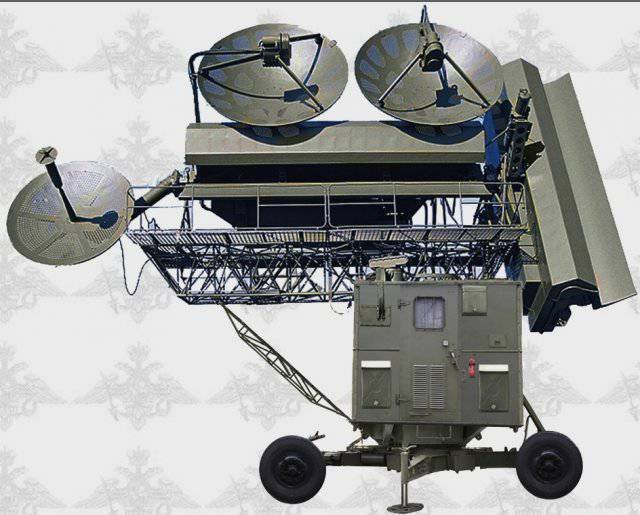
In the construction of CHP-75, the initially envisaged principle of target selection was implemented, which was not applied in CA-75. The automated start-up device APP-75 was added to the set of the SNR equipment.
The new complex was completed with CM-63-1 and CM-63-2 launchers, which ensured the use of upgraded missiles (product 13D).
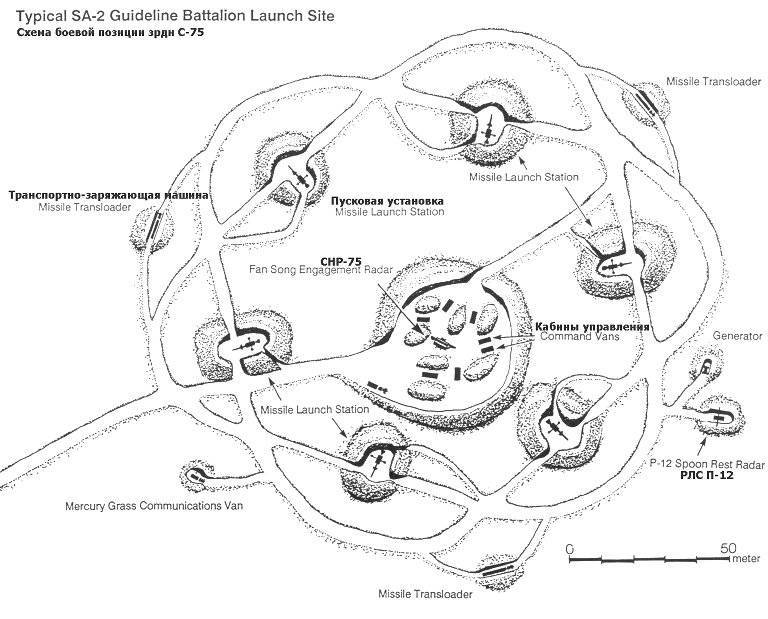
Especially for the C-75, the B-750H rocket was designed, and its more sophisticated B-750BH version (13D product) was developed, which came to the troops from the end of the 50-s. After completion of the ground tests by the Resolution of the USSR CM No. 561 / 290 of 22 in May 1959, the new complex was put into service under the name C-75H "Desna".
The warhead is a high-explosive fragmentation mass of 196 kg (for 20D rockets) and 190-197 kg (for 5Я23). The damage radius of the warhead can reach 240 m for U-2 type targets. For small sized fighter targets, the damage radius is reduced to 60 m.
It should be noted that the designation C-75 is common to the name of all modifications of the complex, and for the long service of the famous air defense system there were not a few of them:
- CA-75 "Dvina" with ZUR V-750 - the first production complex operating in 10 cm
range (1957 g);
- CA-75М "Dvina" with ZUR B-750В, В-750ВМ, В-750ВК (1957);
- CA-75МК "Dvina" with ZUR V-750В - export version CA-75М (1960)
- С-75 "Desna" with ZUR V-750BN - with 6 electrovacuum equipment cm range (1959 g);
- С-75М "Volkhov" with З-В-755 (product 20Д), В-755У (product XNUMХДУ) - a complex with an increased zone of destruction of targets (20);
- С-75М "Volkhov" with З-В-760 (product 15Д) - a complex with a missile with a special warhead (1964);
- С-75D "Desna" with ZUR B-755 and B-755U (1969);
- С-75М "Desna" with З-Z-B-755 - export version (1965);
- С-75М1 "Volkhov" (1965);
- С-75М2 "Volkhov" with З-В-759 (product 5Я23) (1971);
- С-75М3 "Volkhov" with the B-760В missile (product 5В29) - a complex with a missile with a special warhead (1975 g.);
- С-75М4 "Volkhov" with a television optical viewfinder and simulator СНР (1978)
In the mid-seventies, the complexes were equipped with the 9Sh33A television-optical viewfinder with the introduction of an optical target tracking channel, which, under conditions of visual observation of an aerial target, conducted its tracking and firing without using radar SAM systems in radiation mode. At the stations of late release, a new design of narrow-beam antennas was also applied. The minimum height of the affected area was reduced to 200 (100) m. The flight speed of the targets hit was increased to 3600 km / h. Introduced shooting mode at ground targets. A joint test of the new version of the system was completed in November 1978 of the year. During the scheduled overhaul, the C-75M Volkhov complexes of early models were brought to the level of the C-75M4 Volkhov latest modifications to the troops.
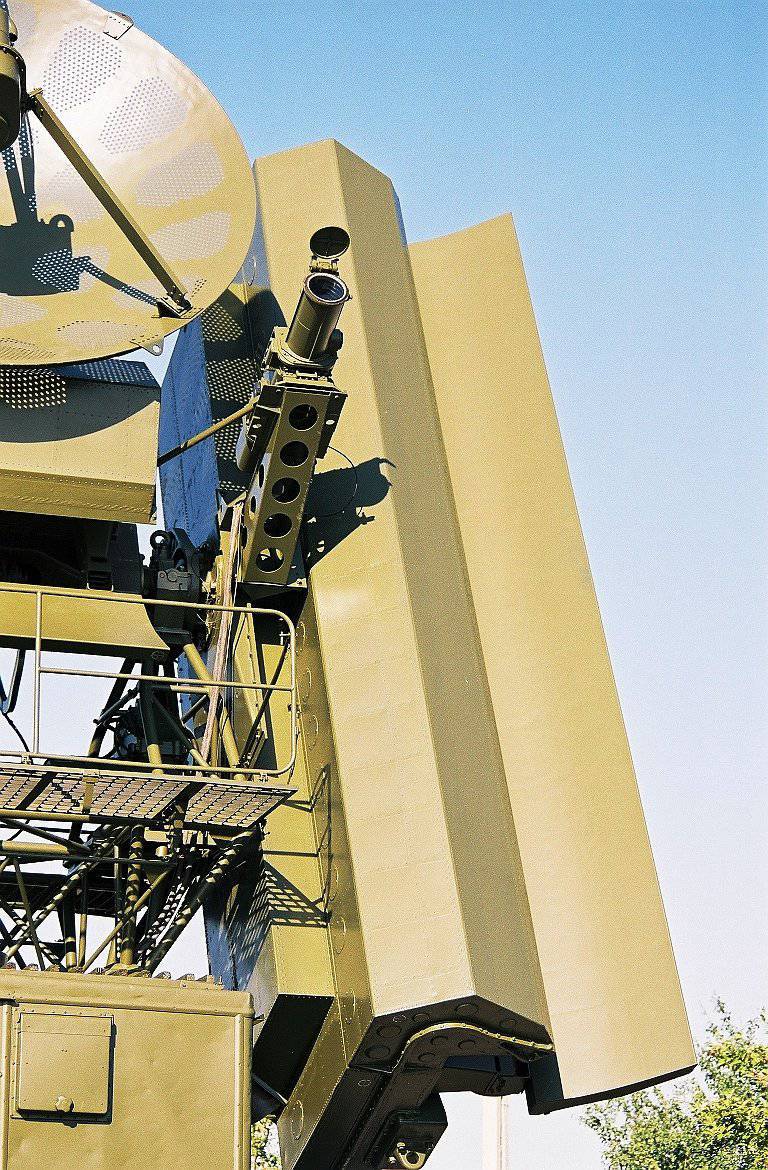
The C-75 complex was manufactured under license in China (HQ-1, HQ-2). It was exported to the countries - participants of the Warsaw Pact, as well as to Algeria, Vietnam, Egypt, Iran, Iraq, China, Cuba, Libya, DPRK, Mozambique, Mongolia, Syria, Yugoslavia and some others.
The C-75 complex includes: the SNR-75 missile guidance station (antenna post, combat control cabin "U", hardware compartment "A", Amazon RD-75 radio range-meter, support and towing equipment), launchers (SM- 63, CM-90) - 6 pcs., Transport-charging machines PR-11 - 6 pcs.
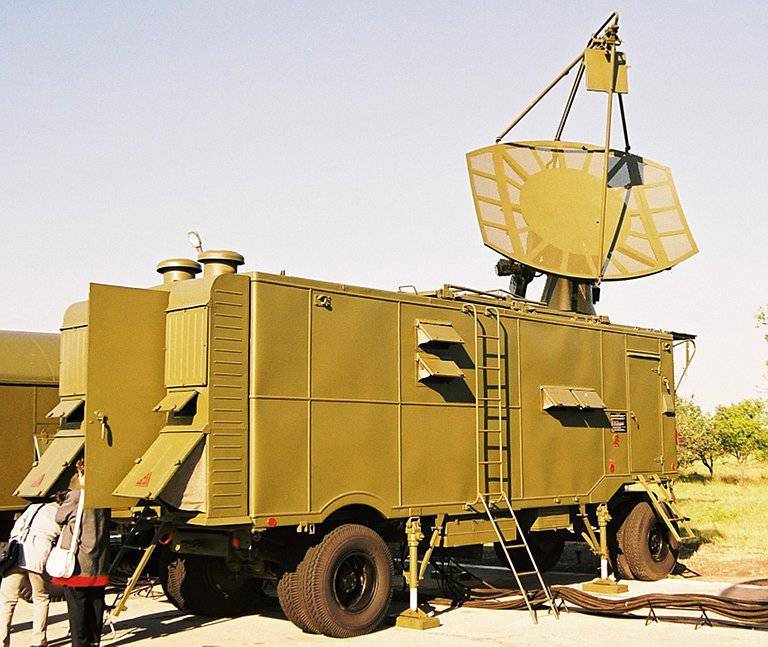
The complex is in service with the anti-aircraft missile battalion (sdn) of the anti-aircraft missile brigade (zrbr). In the case when the mission performs the tasks as a separate one, it can be assigned the Y-YNYX P-12 radar reconnaissance and target designation station and the PRV-13 radio altimeter from the radio engineering division (rtdn) of the brigade.
Terrestrial radiozaproschiki "Silicon-2M", "Password-1», and from the middle 1980-ies - "Password-3» (75E6), "Password-4», conjugation cabin and communication 5F20 (later 5F24, 5X56), receiving targeting from automated control systems.
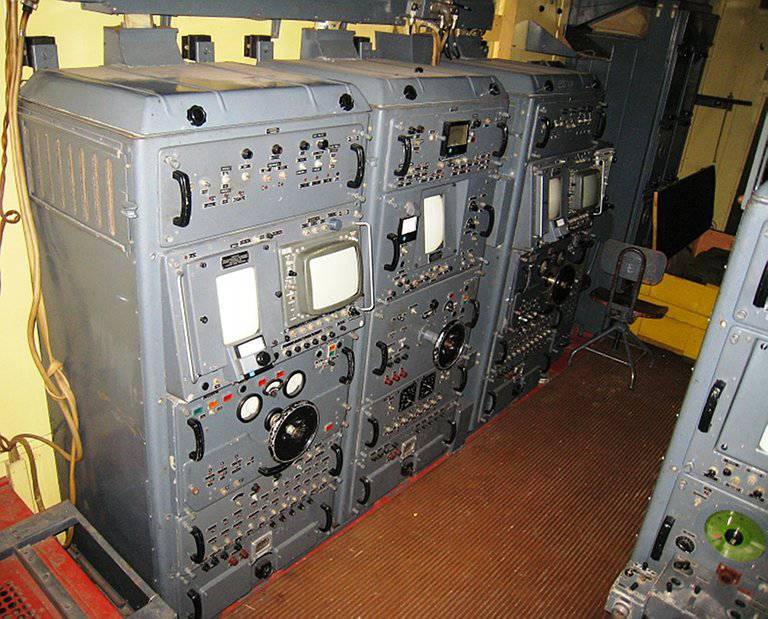
In addition, the division could be given radio-relay equipment 5YA61 "Cycloid".
When creating the C-75M “Volkhov” complex and during its operation, hardware modifications were made to the missile guidance station, which reduced the minimum height of the affected area to 1 km.
In order to defeat group targets in terms of the enemy's use of interference, a missile with a special warhead (nuclear) was developed.
After successful completion of the tests, the B-760 rocket (15D) with a special warhead for the C-75M system was adopted.
Resolution of 15 May 1964. N421-166 and the Order of the USSR Ministry of Defense N0066 1964. According to its characteristics, it practically corresponded to B-755, differing from it by a greater minimum height of the affected area, taken on the basis of the security conditions of the covered objects. In 1964, for the C-75M complex, 15D (B-760) missiles were supplied with a special warhead, which could also be used in complexes of later modifications.
The C-75 complexes defined a whole epoch in the development of the country's national air defense forces. With their creation, rocket weapons went beyond the Moscow region, providing cover for the most important objects and industrial areas throughout almost the entire territory of the USSR.
The first combat complexes deployed on the western border near Brest. In 1960, the air defense system already included 80 C-75 regiments of various modifications - one and a half times more than C-25 grouping. A year later, the number of C-75 regiments almost doubled; moreover, X-NUMX brigades of C-22 and 75 brigades of mixed composition (C-12 together with C-75) were deployed.
When forming anti-aircraft missile brigades in the country's Air Defense Forces, the question arose of organizing automated control of the complexes. In 1963, an automated control system for ASURK-1 missile systems was put into service, which provided control over the fighting of eight divisions of the C-75 system.
Information about the combat use of C-75 air defense missile systems to date is not completely complete and objective.
A little-known fact for a wide range, but the first plane destroyed by the air defense system was shot down over China. In the 50-ies, the reconnaissance aircraft of the United States and Kuomintang Taiwan for a long time flew with impunity over the territory of the PRC.
At the personal request of Mao Zedong, two sets of SA-75M Dvina SAM systems were handed over to the Chinese and a training of calculations was organized.
October 7 1959, the Taiwanese air force RB-57D high-altitude reconnaissance aircraft was shot down by a C-75 complex near Beijing, at an altitude of 20 600 m. It was the first aircraft in the world destroyed by missile defense. For the sake of secrecy, it was officially announced that he was shot down by an interceptor plane. Subsequently, several more aircraft were shot down over China, including the X-NUMX high-altitude reconnaissance U-3 Scout Lockheed. Several pilots were captured. Only after this reconnaissance flights over the territory of mainland China ceased.
On November 16 of the same year, near Stalingrad, the C-75 ADMS was destroyed by an American reconnaissance balloon flying at an altitude of 28000 and m.
1 May 1960 of the year over Sverdlovsk a U-2 reconnaissance plane was shot down by a US Air Force pilot Gary Powers was captured.
At that time, there was still no experience of shooting at real enemy planes, so the cloud falling to the ground from the wreckage of U-2 was initially taken by rocket engineers for the passive interference delivered by the aircraft, and the wounded U-2 was re-fired from three missiles. However, this was nothing terrible. More sadly, the fact that the intruder was destroyed for almost half an hour was never fixed, and at that time there were several Soviet aircraft that tried in vain to intercept the intruder aircraft. As a result, half an hour after the defeat of U-2, due to the confusion at the local command level, another MiG-19 pair was fired at, intercepted by an interceptor, almost an hour before. One of the pilots, Ayvazyan, promptly dived below the lower boundary of the zone of destruction, and another pilot, Safronov, was killed along with the aircraft.
Nevertheless, despite this tragic episode, the anti-aircraft missile forces for the first time confirmed their high efficiency. Particularly impressive was the victory of the missile against the background of repeated unsuccessful attempts by fighter aircraft to intercept U-2.
Another politically significant application of CA-75 was the destruction of U-2 over Cuba 27 in October 1962. The pilot, Rudolf Anderson, was killed, and this "first blood" added fuel to the "Caribbean crisis." At that time, on the "island of freedom" there were two Soviet divisions with anti-aircraft missile systems, armed with a total of 144 launchers and twice as many missiles. However, in all these cases, as with the use of anti-aircraft missiles on U-2 over China in 1962, low-speed and non-maneuverable unarmed aircraft, though flying at very high altitude, were shelled. In general, the conditions of live firing differed little from the range, and therefore the ability of the SA-75 to hit tactical aircraft was not assessed by the Americans as low.
The situation was completely different in Vietnam during the fighting in 1965-1973. After the first "rehearsal", which took place during the "Tonkin crisis" in August 1964, the United States, from the beginning of 1965, began a systematic bombardment of the DRV (North Vietnam). Soon the DRV was visited by a Soviet delegation headed by A.N. Kosygin. The result of the visit was the start of large-scale deliveries of weapons to the DRV, including the SA-75 air defense system. By the summer of 1965, in Vietnam, two CA-75 anti-aircraft missile regiments, staffed by Soviet military experts, were deployed. The Americans, who recorded the preparation of positions for 5 on April 1965, rightly assumed the presence of “Russians” on them and, fearing international complications, did not bomb them. They did not show increased concern after the 23 of July 1965 of the electronic reconnaissance aircraft RB-66С recorded the first launch of the CA-75 radar.
The situation changed radically the very next day, when on July 24 three F-4С, flying at an altitude of about 7 km, were fired at with three missiles fired by the Soviet crew under the command of Major F. Ilinykh. One of the missiles struck the "Phantom", which was piloted by captains R. Fobeir and R. Cairn, and the fragments of two other missiles damaged three other "Phantom". The pilots of the downed "Phantom" ejected and were captured, from which 12 February 1973 was released only R. Keirn, the fate of the co-pilot remained unknown.
So, it is extremely bad for Americans, events developed the first time after the start of the use of the air defense system. And this is despite the fact that the Americans began to prepare for a meeting with Soviet anti-aircraft missiles immediately after the destruction of the Powers aircraft. In 1964, in the California desert, they carried out a special exercise “Dessert Strike”, during which they evaluated the capabilities of aviation in the zone of action of missile air defense weapons. And immediately after receiving information about the first shot down by the Phantom missiles, the Hopkins Institute was involved in the work on studying possible means of countering the air defense system.
Following the first received recommendations to counter the air defense missile system, the Americans significantly increased their intelligence activities, assessing in detail the capabilities of each detected air defense missile system, taking into account the surrounding terrain, and taking advantage of unreported areas at junctions and at low altitudes, laid out their flight routes. According to the testimony of Soviet specialists, the quality of intelligence was very high, and it was conducted with such care that any movement of missilemen in the shortest possible time became known to the Americans.
Other recommendations on countering the air defense missile system were reduced to the implementation of tactical and technical methods - approaching low-altitude bombardment sites, maneuvering in the zone of the air defense missile system, setting up radio interference from aircraft EB-66. The main option of avoiding missiles during the 1965-1966 years. became an intense reversal. A few seconds before the approach of the rocket, the pilot entered the plane into a dive for a rocket with a turn, change in altitude and course with the maximum possible overload. With the successful implementation of this maneuver, the limited speed of the missile guidance and control system did not allow to compensate for the new error, and it flew past. In the case of the slightest inaccuracy in the construction of the maneuver, fragments of the missile warhead, as a rule, hit the cockpit.
For the first month of the combat use of the SA-75, according to Soviet estimates, 14 American aircraft were shot down, while the entire 18 SAM was spent. In turn, according to American data, over the same period, only three aircraft were shot down by anti-aircraft missiles - in addition to the previously mentioned F-4С (Soviet experts counted the destruction of three “Phantoms” in that battle at the same time) at one August 11E (according to Soviet data - four at once) and August 4 one more F-24В. Such a disagreement in casualties and victories, however, characteristic of any war, over the next seven and a half years of hostilities became an indispensable companion of the confrontation between the air defense systems of Vietnam and American aviation.
According to American data, only about 200 machines were lost from the fire of the air defense missile system. One of the pilots shot down by an anti-aircraft missile was future presidential candidate John McCain. It can be assumed that, in addition to, in principle, possible deliberate disinformation caused by the Americans' underreporting of the losses from the air defense missile systems, there may be a lack of objective data on the specific causes of the death of their airplanes - the pilot could not always inform the command that he had been shot at by the air defense missile system. On the other hand, story of all wars indicates the inevitable and often unintentionally overstatement of the number of their victories by the participants in the battles. Yes, and a comparison of missile officers' reports, who judged the shooting results on the marks on the screens, with a more primitive method of counting downed American aircraft by Vietnamese factory numbers on the wreckage in some cases testified to the overestimation of the number of aircraft destroyed by missiles 3-5 times.
The average missile consumption per downed aircraft accounted for 2-3 missiles at the initial stage of use and 7-10 missiles at the time of the end of hostilities. This is due to the enemy developing countermeasures and the use of Shrayk anti-radar missiles. In addition, it should be remembered that the "Dvina" fought in extremely difficult conditions. It was not supported by the air defense missile systems of other classes, the air defense missile system conducted combat operations in the conditions of single combat with an opponent constantly adapting to the situation, letting the enemy change his tactics. There was no continuous zone of anti-aircraft rocket fire in Vietnam.
However, despite the fact that, even according to Soviet experts, less than a third of American planes were shot down, the most important result of their use was the need for a radical change in tactics of aviation operations, its forced transition to low-altitude flights, where it suffered heavy losses from artillery fire and small arms, with the result that the effectiveness of the use of aviation was significantly reduced.
In addition to Vietnam, C-75-type air defense systems were massively used in conflicts in the Middle East. The first experience of their use in the "Six Day War" is difficult to attribute to successful. According to Western data, the Egyptians, having 18 complexes, could only launch 22 SAM, knocking down two Mirage-IIICJ fighters. According to Soviet data, the Egyptians had 25 divisions C-75, and the number of downed aircraft was 9. However, the most unpleasant event of that war was the capture of some C-75 components by the Israelis on the Sinai Peninsula, including missiles.
More successfully, anti-aircraft missiles were used in the so-called "war of attrition". 20 July 1969 The Egyptians shot down the Israeli Piper Cub and, before the outbreak of the war, 1973 brought the number of victories C-75 to 10. One of them was highly appreciated by the Egyptians when the September 75 X-NUMX X-NUMX was “removed” by the C-17 radio intelligence plane at the 1971 km range.
С
Judging by foreign data, in the course of the “October war” 1973, another 14 of Israeli aircraft was shot down by Egyptians and Syrians using C-75-type air defense systems.
Israeli pilots condescendingly called the C-75 SAM missiles "flying telegraph poles." However, the use of this air defense system forced to abandon flights at altitude and go to low-altitude flights, which made it difficult to perform combat missions and led to large losses from low-altitude air defense systems and anti-aircraft artillery. In fairness, it is worth noting that the use of the C-75 in Vietnam was more successful. Here the general not high motivation of Arabs to fight, sloppiness, stereotyped actions and frank treachery affected.
These complexes were also used in Lebanon by Syrians in 1982. In addition to the most large-scale wars in Vietnam and the Middle East, C-75 complexes were used in many other conflicts, starting with the Indo-Pakistani 1965 clash, when their first victim was the world "became the Indian An-12, mistaken for the Pakistani C-130.
During the Gulf War 1991 of the year, in service with Iraq was 38 S-C-75. However, all of them were suppressed or destroyed as a result of the work of various EW facilities and a massive strike with cruise missiles.
C-75 were used in a large number of armed conflicts and are still used by some countries. In our country, decommissioned at the beginning of the 90's.
On the basis of two-stage missiles of the C-75 system (20D of various modifications, 5X23), the PM-75 target missile was developed in two main versions. RM-75МВ - low-altitude target used to simulate air targets in the height range 50-500 m at flight speed 200-650 m / s, flight range - 40 km. The RM-75B - a high-altitude target missile with a range of 40-100 km allows simulating aerial targets at altitudes from 1000 to 20000 m with flight speeds of 350-1200 m / s.
Target missiles are used as part of the standard modified C-75MZ complexes. The modified target complex allows to ensure: maintaining a high level of combat readiness of the air defense system; combat training training in conditions close to real; tests of air defense systems; conditions of group plaque targets.
Based on:
http://pvo.guns.ru/s75/s75.htm
http://russianarms.mybb.ru/viewtopic.php?id=87
http://www.dogswar.ru/artilleriia/raketnoe-oryjie/4471-zenitnyi-raketnyi-ko.html
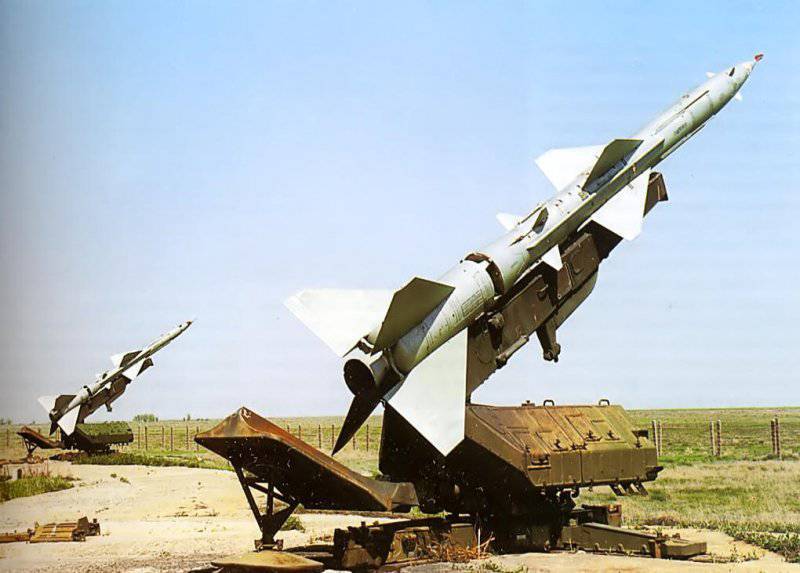
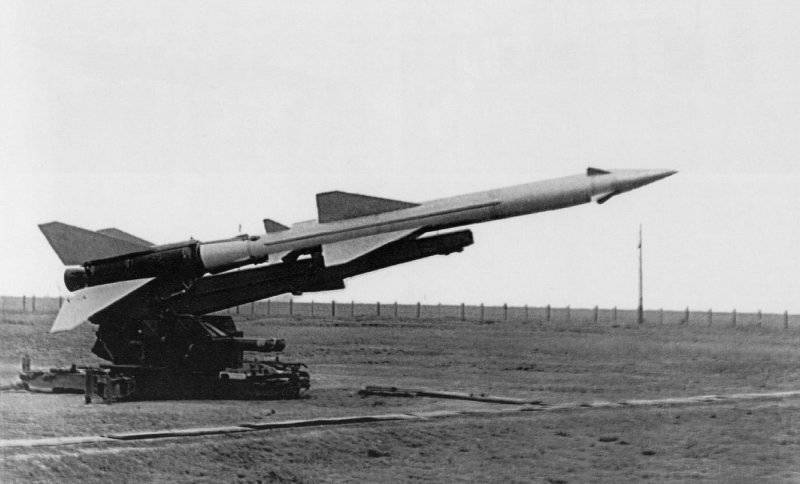

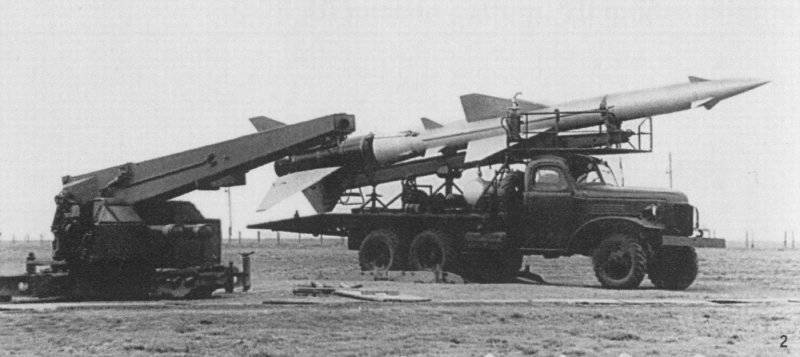
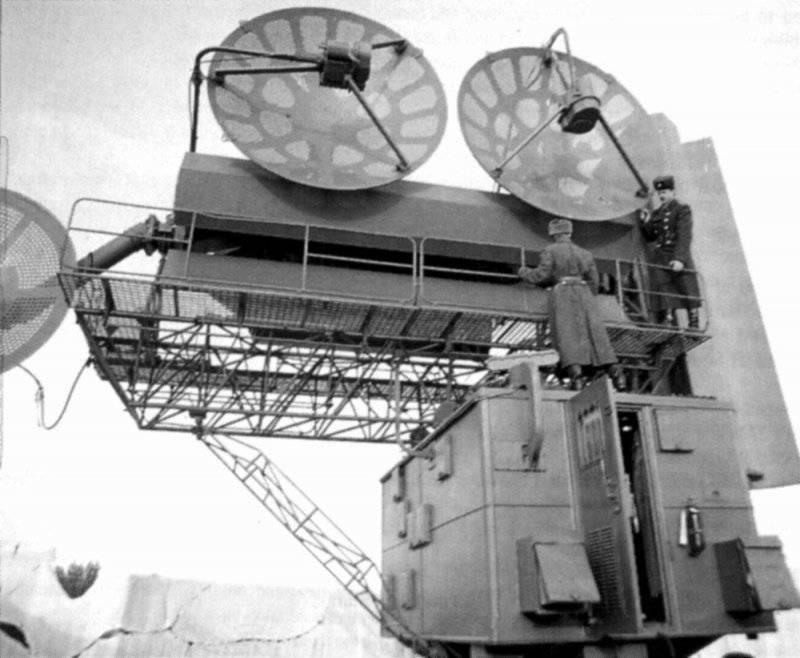
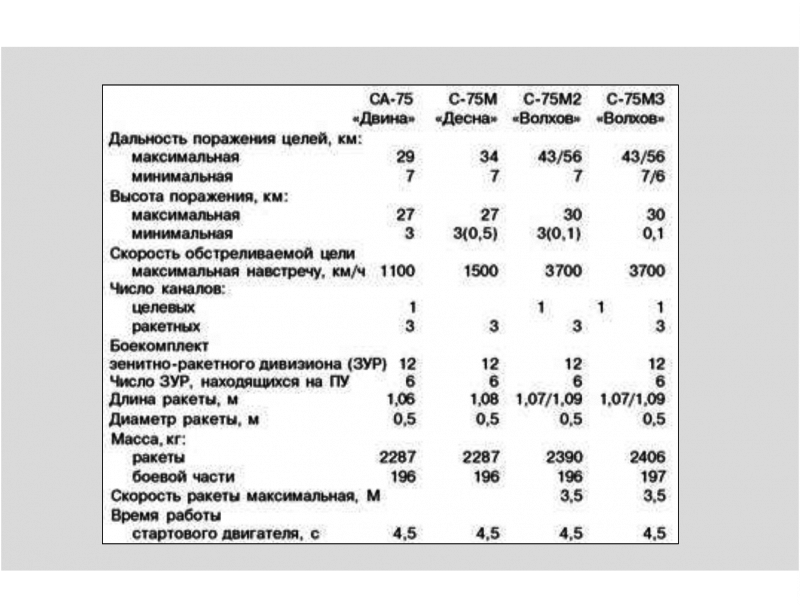
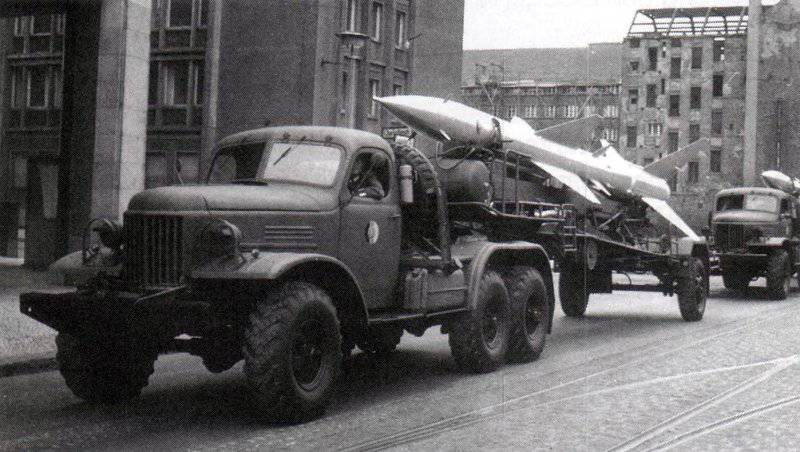
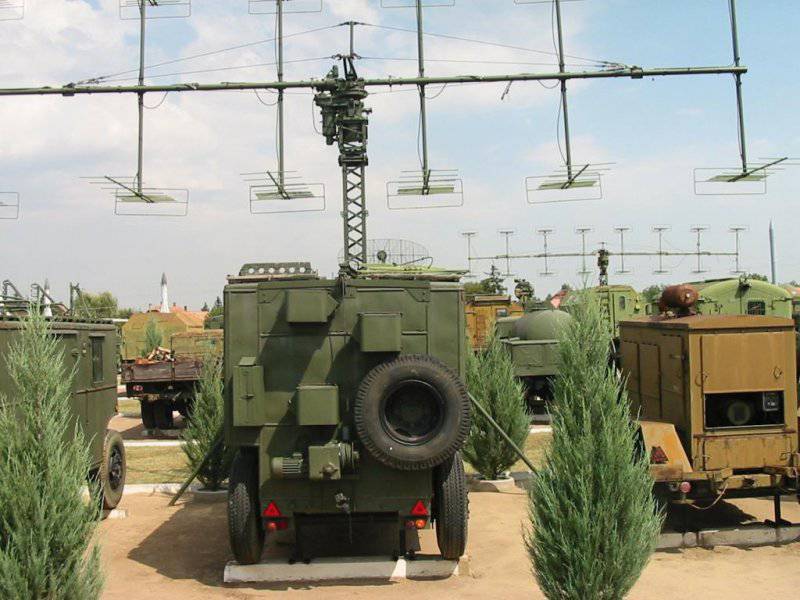
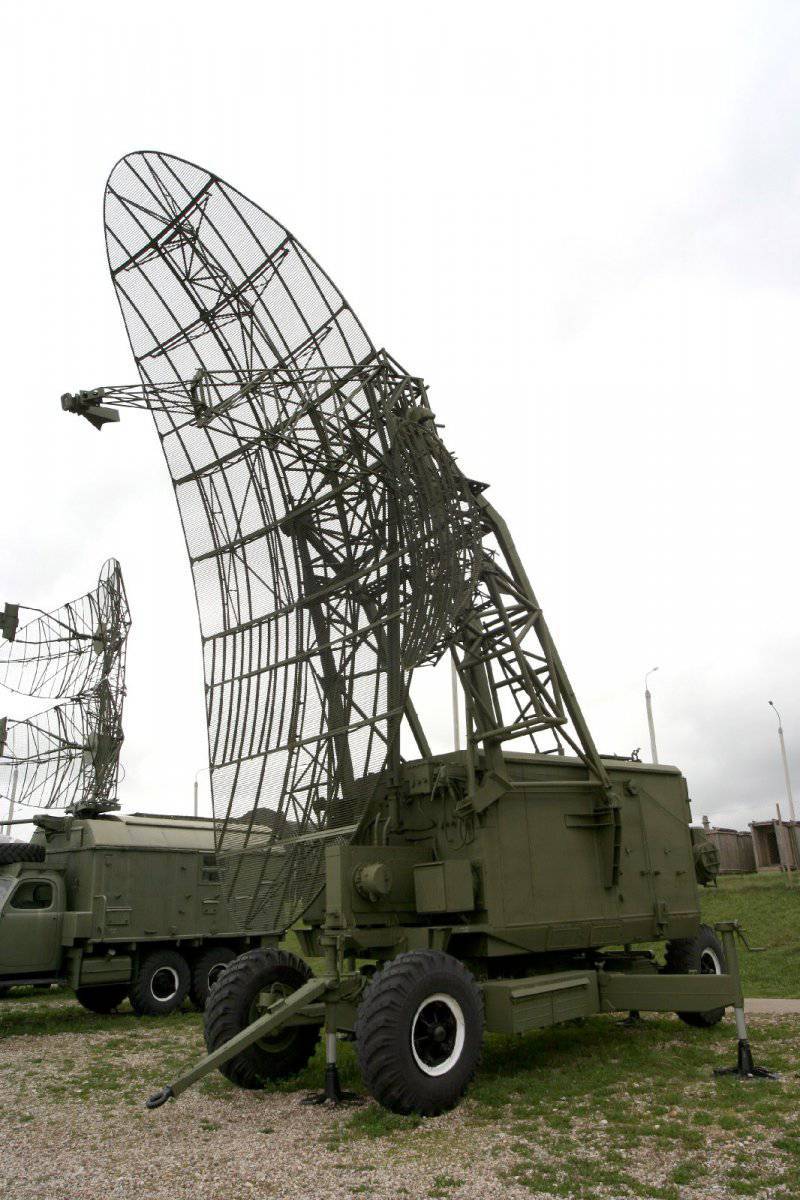
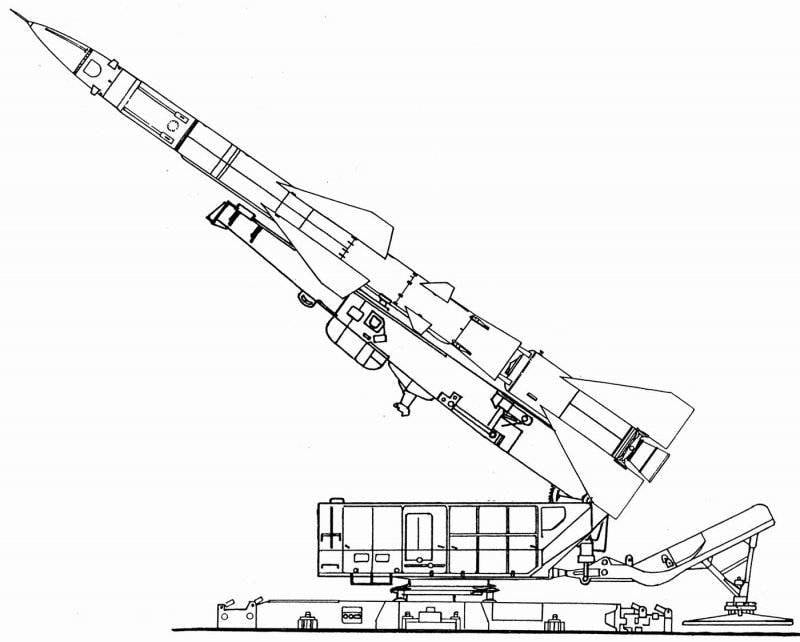
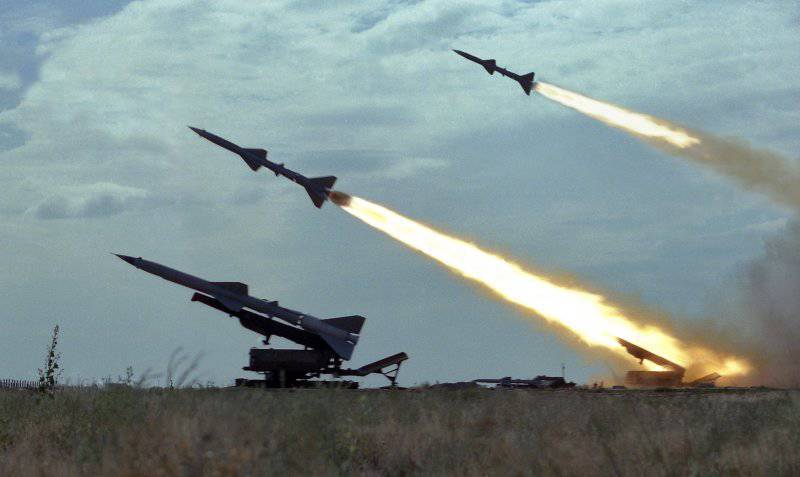
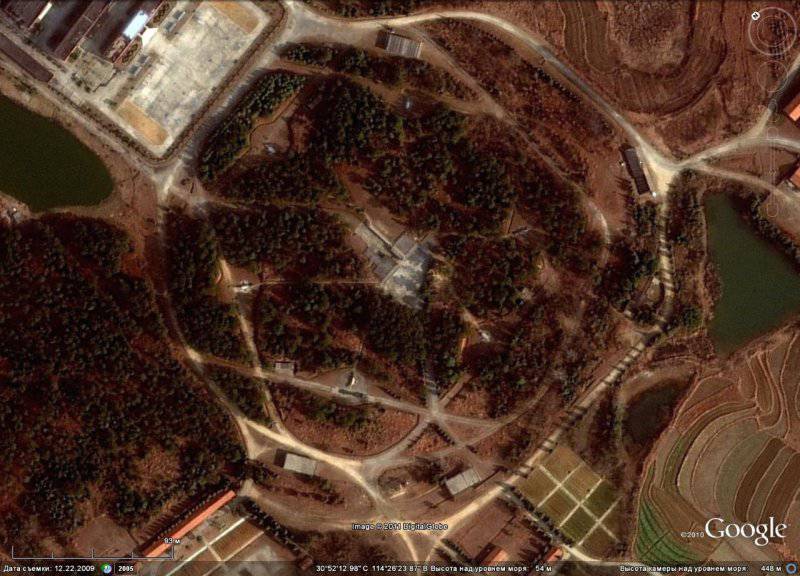
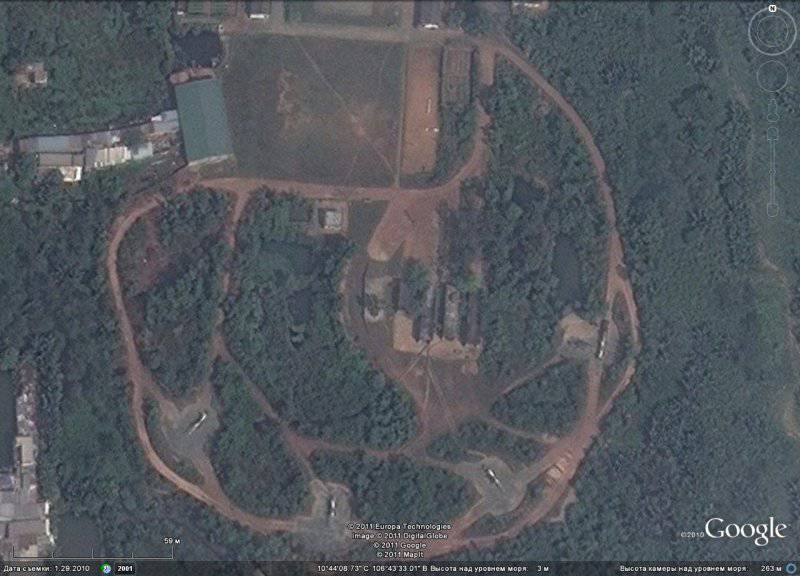
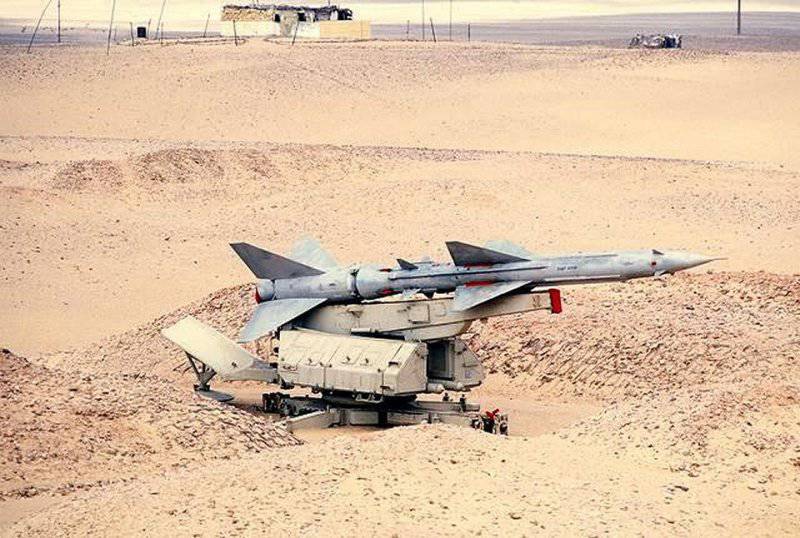
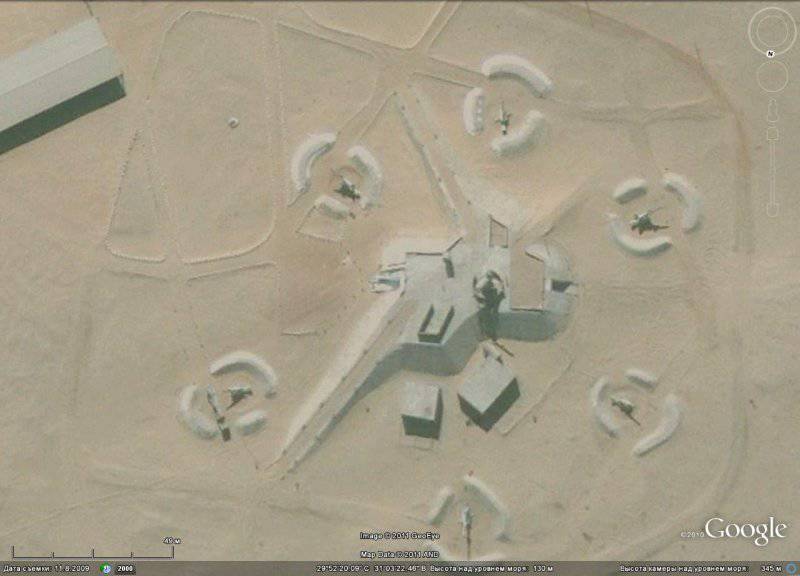
Information